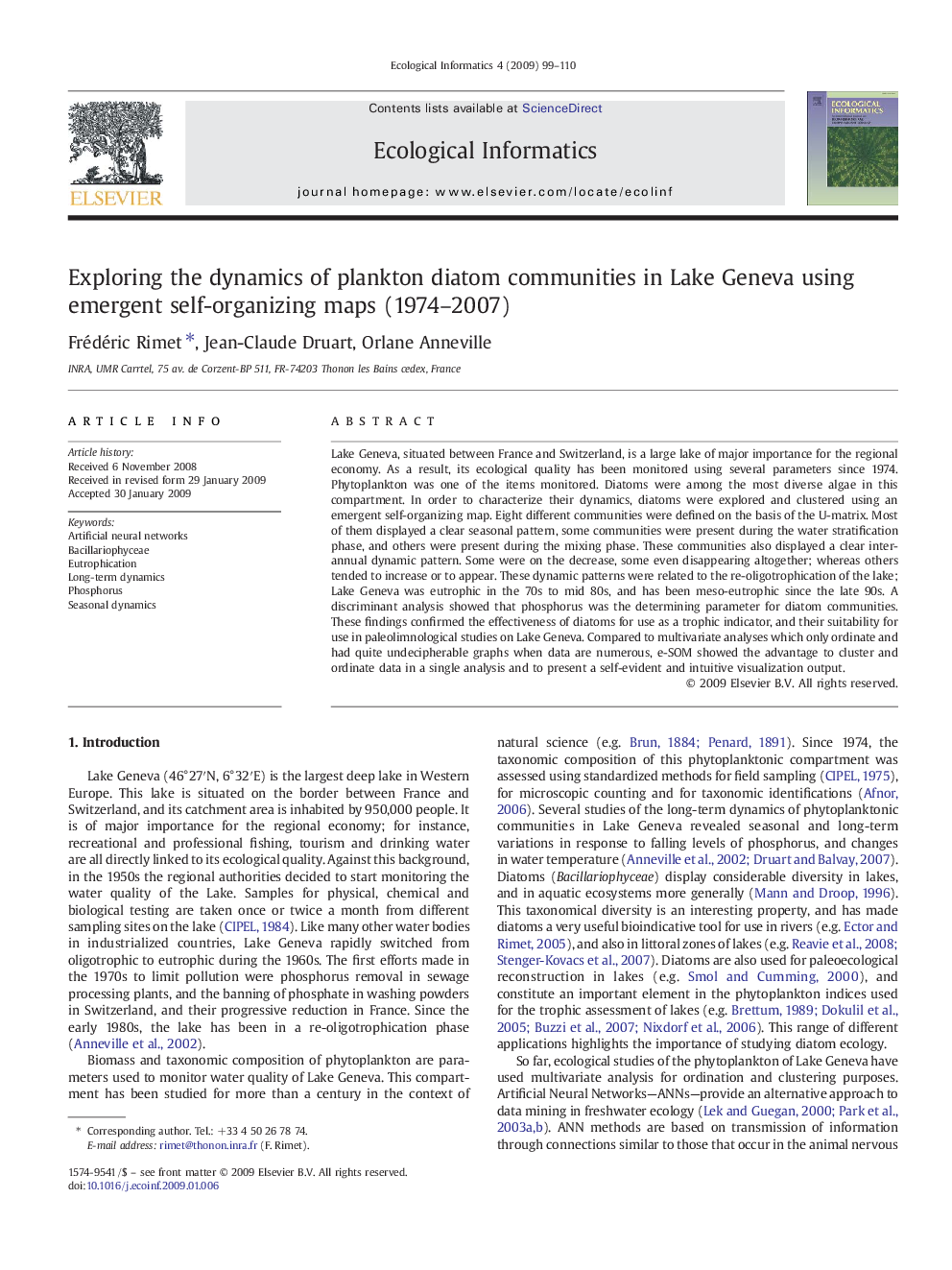| Article ID | Journal | Published Year | Pages | File Type |
|---|---|---|---|---|
| 4375219 | Ecological Informatics | 2009 | 12 Pages |
Lake Geneva, situated between France and Switzerland, is a large lake of major importance for the regional economy. As a result, its ecological quality has been monitored using several parameters since 1974. Phytoplankton was one of the items monitored. Diatoms were among the most diverse algae in this compartment. In order to characterize their dynamics, diatoms were explored and clustered using an emergent self-organizing map. Eight different communities were defined on the basis of the U-matrix. Most of them displayed a clear seasonal pattern, some communities were present during the water stratification phase, and others were present during the mixing phase. These communities also displayed a clear inter-annual dynamic pattern. Some were on the decrease, some even disappearing altogether; whereas others tended to increase or to appear. These dynamic patterns were related to the re-oligotrophication of the lake; Lake Geneva was eutrophic in the 70s to mid 80s, and has been meso-eutrophic since the late 90s. A discriminant analysis showed that phosphorus was the determining parameter for diatom communities. These findings confirmed the effectiveness of diatoms for use as a trophic indicator, and their suitability for use in paleolimnological studies on Lake Geneva. Compared to multivariate analyses which only ordinate and had quite undecipherable graphs when data are numerous, e-SOM showed the advantage to cluster and ordinate data in a single analysis and to present a self-evident and intuitive visualization output.
